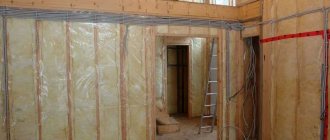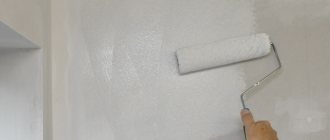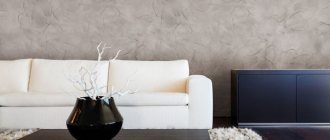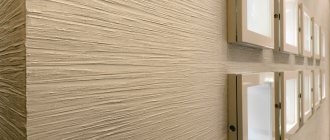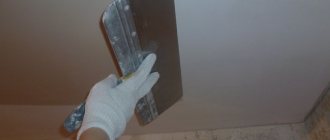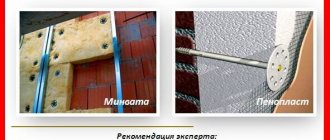According to tradition, natural wood materials are used to build a bathhouse, so that the healing effect of the steam room is greatly enhanced. But it’s no secret that when exposed to high temperatures, wood tends to deteriorate. So what to do in this situation?
The importance of processing the structural elements of the bathhouse
By its natural origin, wood is an excellent natural material, which is distinguished not only by its environmental friendliness and aesthetic properties, but also by its good hygroscopicity. The tree absorbs moisture quite thoroughly and quickly, creating a very favorable habitat for fungi, microorganisms and insects.
Important! Insects that can settle in your bathhouse can quickly destroy the structure of the wood.
It is worth noting that excessively high air humidity in a bath room contributes to rotting and damage to wooden elements by mold, parasites, and so on.
Every person starting the construction of a bathhouse is well aware of the need to install high-quality heat, hydro and vapor barriers, since without these layers the building structure will be completely vulnerable, and the desired effect should not be expected from the steam room.
Impregnation for a bath plays the same important role as an insulating cake, despite the fact that many are still arguing about whether it is necessary to treat the lining in a steam room. Protection in the bathhouse should be provided to tables, shelves, benches and other interior elements. The steam room especially needs protection, since it is in this room that the temperature varies to critical levels.
If the wood in the steam room is not treated, then under the influence of steam and moisture it will quickly deteriorate, as a result of which it will have to be replaced or repaired.
Attention! The choice of impregnation composition for the inside of the bath should be approached as responsibly as possible in order to avoid further problems.
It is worth noting that doubts about whether it is necessary to process the lining in a steam room are quite justified. This can be explained by the fact that an incorrectly selected composition that will be used to treat the steam room, when heated, can emit vapors harmful to the human body, or leave a burn upon contact with the skin.
Advice for those who are not sure whether it is necessary to process the lining in a bathhouse: you can simply carefully sand the walls and furniture, but in this case it is necessary to ensure the highest quality ventilation so that high humidity does not cause the appearance of mold and fungi.
Application of paints and varnishes
Not every paint is suitable for painting a log house. When choosing it, they take into account, first of all, the degree of vapor permeability of the decorative layer, the type of solvent - it can be organic or aqueous, and elasticity.
The walls are treated in several layers. The color should emphasize the natural pattern and texture of the wood. Therefore, you can choose not even a tinted composition, but a translucent or transparent composition.
The main thing is that wood paint must be vapor permeable and not impede the passage of water vapor. Over time, under the influence of moisture coming from the inside, the sealed coating will collapse, become covered with bubbles and begin to peel off. Therefore, when purchasing paints and varnishes for a log house, you must carefully read the information provided by the manufacturer on the packaging. The throughput should not be less than 120 grams per m2.
Acrylic vapor-permeable varnish for exterior and interior use
An important criterion is the adhesion of paintwork materials, which ensures the strength of the decorative layer on the surface of the wood. The most suitable composition in this regard is alkyd paint.
Acrylic compositions show high vapor permeability. But when using them, it is necessary to carefully insulate the frame from the inside. Acrylic paints containing latex have greater elasticity. Silicone paint is much more expensive than acrylic varnish.
Which one to choose
In the process of finishing a bathhouse building, many people wonder how to treat the lining in the bathhouse or how to cover the shelves in the bathhouse.
The modern market offers a lot of options for a variety of products, but it is quite difficult to choose from them really high-quality ones.
Before you start choosing an impregnation for the inside of a bathhouse or sauna, you need to decide on the purpose of its use, namely:
- Application object;
- The level of humidity in the room, because the impregnation for the steam room in the bath should be more moisture and heat resistant;
- Will the natural wood texture be preserved or will varnishing and painting be planned?
- How to apply impregnation for the bathhouse inside with your own hands.
Impregnation for wood in a bathhouse must have a large number of properties in order to provide all wooden elements with reliable protection.
Information. In addition to reliable protection, the impregnation for the lining in the bathhouse should ensure unhindered air exchange.
You should also pay special attention to the environmental friendliness of the purchased product, since when heated in a steam room, it can release harmful substances.
Impregnation for the bathhouse floor should not lead to the formation of a sliding surface, and products for frequently used surfaces should be resistant to regular wet cleaning. In turn, the impregnation for the shelves in the bathhouse is absorbed as deeply as possible into the material, providing reliable protection for the structure and the safety of steamers.
Answering the question of how to cover the paneling in a steam room, we note that when drying, the product should not form a film, as this can cause burns on the skin of the person who comes into contact with it.
Requirements for protective compounds
Requirements for funds:
- Resistant to moisture and temperature changes.
- Immunity to mold and mildew formation
- Preservation of the natural shade of wood, if the products are not intended to change the surface design.
The protective composition should not emit harmful substances during operation.
Applying a protective composition (Photo: Instagram / flaxoilwood)
Types of protective equipment: how to impregnate the lining inside the bathhouse, as well as other structural elements
To treat lining in a bathhouse and wooden elements in a residential building, you will need completely different solutions.
And the point here is not even in the design of the building, but in such a critical difference in the atmosphere of the premises.
Thus, in a bathhouse it is more aggressive, and the usual means used in a residential building will simply be useless here.
There are the following types of impregnations for log baths:
- Finnish impregnations for baths and saunas, providing protection against moisture;
- Means for processing lining inside the bathhouse;
- Prevents the appearance of mold, mildew and parasites;
- For a bath outside.
Attention! Despite the fact that many manufacturers claim their products as universal, most of them are not.
These drugs can be produced in various forms:
- Aerosol;
- Solution;
- Gel.
Important! You should not use aerosols to impregnate your bath with your own hands if you have any respiratory diseases. It is best to choose a gel product.
Impregnations for wood for baths and saunas are made either on an organic or chemical basis. Of course, if the question arises of how to cover the lining in the steam room, it is best to stick with organic solutions.
Each product has water-repellent properties, since modern drugs rarely perform only one function. Thus, one product can simultaneously protect the tree from the effects of temperature and moisture, as well as from parasites and microorganisms.
According to their composition, wood impregnations for indoor baths are divided into:
- Water soluble;
- Oily.
In addition, new combined varnishes and paints with moisture-proof properties, as well as protection against the appearance of microorganisms and parasites, are widely used.
Information. Most manufacturers produce preparations with new additional properties of dirt repellency and fire resistance.
How to treat the inside of a bathhouse to protect it from an aggressive environment
Wood is the best material for building a bathhouse, its interior decoration and making the necessary furniture. Thanks to low thermal conductivity, environmental friendliness and attractive appearance. But the heat and high humidity inherent in the inside of the steam room have a very detrimental effect on the wood.
Therefore, it is worth thinking about how to treat the inside of the bathhouse to extend its service life.
Photo of the steam room after processing the interior lining
General provisions
Many people believe that correct installation of all building elements, proper ventilation and the use of only high-quality tree species can prevent adverse effects on the walls of the steam room. And this is better than treating the walls in the bathhouse with some kind of antiseptic, since there will be no danger of the enzymes in the solution evaporating into the air at high temperatures.
Do-it-yourself ventilation arrangement
Absolutely right. Good air movement can overcome dampness in the bathhouse and prevent mold and fungi from developing from the inside. But this is not the only problem.
It is also possible:
- The effect of “warping” of boards due to constant exposure to high temperatures. The most vulnerable finishes are on the ceiling and near the stove.
- Darkening and contamination of the wood surface with frequent use, making the interior look like the inside of a “black” bathhouse. This is especially true for shelves.
Type of “black” bath
- Pest attack. External timber walls are also susceptible to this.
- Stagnation of dampness in the absence of ventilation or an error in its design.
Thus, we can come to the conclusion that processing is still necessary in most cases. It will definitely be able to extend the life not only of the interior lining of the bathhouse, but also of the wooden walls outside the building.
Moreover, current solutions:
- Environmentally friendly even at very high temperatures.
- Heat resistant.
- Excellent protection from dirt.
- Drive away possible pests.
- Increases the strength of the material.
Let's consider the recommended compositions for various elements of baths and saunas.
Types and applications of solutions
You should not treat all surfaces of the building with the same solution. You should proceed from the proximity of the product coated with the protective composition to the person during the bath. So, for example, when choosing what to treat the lower rims of a bathhouse with, there is no point in overpaying for an expensive and harmless composition, because they do not come into contact with people.
Composition for the lower elements of the bath
Treatment of the sauna base
To sufficiently protect this element of the building, any antiseptics available for sale on the shelves of hardware stores are suitable. Their main task is to protect against mold and pests.
If their price and the unknown quality make you doubt, then you can use the following recipe and prepare the solution yourself:
- Heat the bitumen in a bucket until it boils.
Bitumen should be heated until it boils completely.
- Remove the bucket and set it away from the fire.
- Mixing thoroughly, pour diesel fuel until a black liquid mass is obtained in a cold state.
- The result is an inexpensive and excellent antiseptic, which is the best answer to the question of how to treat the lower crown of the bathhouse.
Tip: it is recommended to heat it to a boil before each application of this solution. This allows it to penetrate 6-8 mm into the wood surface, which significantly increases protection against rot and insect attacks.
This homemade solution is also perfect for treating logs in a bathhouse. Because the underground is also not a bath element in contact with people, but is often located in increased dampness.
Wall treatment
Coating the timber with an antiseptic
In the case of interior wall decoration, you must remember that while visiting the steam room you will have to breathe what you treated them with.
Advice: if you doubt the safety of using an unfamiliar composition, the instructions in the appendix will always help you. After carefully studying it, you will receive information about the possibility of using such a solution in a bath or sauna.
The most common and trustworthy are:
- Antiseptic "Sauna", made on an acrylic base. Creates a transparent polymer layer that:
- Does not allow air, dirt and water to pass through.
- Eliminates pathogenic microorganisms common in everyday life that cause infectious diseases in the human body.
- Improves the aesthetic appearance of wood surfaces.
Sample of water-based antiseptic
- Natura. Creates a translucent water-repellent coating for wood. There is a possibility of tinting with a wide range of shades.
Advice: in order not to confuse the treated surface with an untreated one, it is recommended to use a tinted composition.
Now you know how to treat the walls in a bathhouse without fear of subsequent poisoning.
Shelf processing
Shelves coated with a protective layer
The peculiarity of shelves and benches for a bath is that they are touched by human skin. Consequently, when a polymer layer appears on them, there is a risk of burns. This leads to the need to use solutions that are well absorbed into the wood pores.
These include such oil compositions as:
- Sauna Natura;
- Supi Laudesuoja;
- Eurotex "Sauna".
Advice: if, when applying an oil antiseptic, a liquid residue remains, be sure to wipe it off with a prepared rag to avoid burning.
Conclusion
Although many people defend the opinion that a bath should have a natural look without the use of protective compounds, practicality proves the opposite. Even with an ideal ventilation system, it is impossible to get rid of pests, dirt and heat.
The main thing is to choose the right antiseptic for each area of your bath or sauna. There are absolutely safe water-based solutions for the area inside the steam room.
Steam room treated with protective and safe antiseptics
The video in this article will provide additional material on this topic. A protected sauna will last much longer and better!
9ban.ru>
How to treat the interior of the lining: distinctive features of water-soluble and oil-soluble solutions
Water-soluble and oil-based bath impregnations differ both in composition and properties. Let's take a closer look.
How can you cover the lining in a bathhouse: water-soluble products
Acrylate is used as a basis for the manufacture of water-soluble products.
The finished product protects the structure from all fronts: from moisture, from microorganisms and parasites, from dirt and damage.
The solution can be either colorless or colored. In order for it to turn into the desired color, you need to add a drop of dye to the product.
This solution also has advantages. These include the complete absence of odor, as well as the preservation of the appearance and texture of the wood.
Attention! The disadvantage of this product is its gradual leaching from the surface of the wood. Because of this, processing has to be repeated somewhat more often.
How to treat lining in a steam room: oil products
The advantage of oil products is that they are deeply absorbed into the wood and retain their properties for quite a long time, despite frequent moisturizing.
However, this solution has a strong unpleasant odor, which is explained by the solvent in the composition.
Information. Due to the increased toxicity of the drug, it is not recommended to use it in closed and poorly ventilated areas.
Impregnations containing oils and wax seal wooden elements and provide them with long-term protection.
Types of protective compounds
Types of funds:
- Waxy, oily substances. Effectively displaces water from wooden surfaces. They have a specific odor that appears when heated.
- Water soluble. After their application, a dense film is formed on the surfaces, which protects the material from moisture.
- Antiseptics for wood. They are used as a fungicide that destroys pathogenic bacteria and pathogenic microflora.
- Decorative coatings. Varnishes that are made on an organic basis.
The specifics of the product, its purpose, and place of application are indicated on the packaging.
Oils
There are different types of oils for wood processing - tung, linseed, tar, teak. Such compositions are easy to apply to surfaces. They do not emit harmful substances during operation. With their help you can restore damaged wooden surfaces.
Oil and wax for baths (Photo: Instagram / maslo_zhivica)
Impregnations
Kinds:
- Salt based. They can protect wood from fire or mold and mildew. Similar compositions are used when treating non-residential premises. They are a powder that must be diluted with water before use.
- Non-salt impregnations made on a water basis. Fire retardant compounds for wood processing. Suitable for work indoors and outdoors.
Lucky
The internal surfaces of the steam room cannot be coated with regular varnish. It heats up quickly, begins to crack, and crumbles. When exposed to high heat, varnished surfaces emit harmful substances.
To make the coating durable, you need to use special compounds - acrylic varnishes. Such compositions can withstand heating above 120°C.
Applying varnish (Photo: Instagram / _eco_steam_)
Wax
Made from three components:
- solvent;
- carnauba wax;
- paraffin or beeswax.
Wax for impregnating wood penetrates deeply into the material, repels moisture and dirt. The products are safe because they do not emit harmful substances during use.
Products for lining in the washroom and dressing room
Finnish impregnations for baths and saunas are a clear favorite in this segment. The most famous representative is the impregnation for baths and saunas Tikkurila.
The domestic analogue of Tikkuril impregnation for baths is the product.
Both products have an organic composition, that is, they are absolutely environmentally friendly.
Also an undoubted advantage is the ease of cleaning surfaces coated with these products, since when they dry they form a thin film.
Among other things, these compositions have protective properties against fungi and microorganisms.
How to cover the lining in the bathhouse? An excellent product is Eurotex-Sauna, which is made on a wax basis and has antiseptic properties.
This impregnation for shelves in a bathhouse or sauna is a colorless product that forms a thin protective film on the surface of shelves and other interior items.
Information. After treating the bathhouse with these products for three to five visits, a specific, but not very pronounced odor is present in the room.
Recommendations
Tips for using bath impregnations:
- It is better to carry out work in the fall.
- Do not apply the compositions outdoors in rain, high humidity, or high temperatures.
It is important to prepare wooden surfaces in advance for applying the impregnating agent. They need to be cleaned of old decorative coatings (if any), the wood must be sanded so that the surfaces of the parts are smooth, and sawdust and wood dust must be swept away.
It is recommended to cover wooden surfaces that will come into contact with water with several layers of protective impregnation. They need to be regularly checked for the integrity of the water-repellent film and updated. These actions will be enough to increase the service life of the wood in the bathhouse.
Treatment of lining in the steam room and oil for shelves
In most cases, the answer to the question of whether it is necessary to treat the lining in a steam room is negative.
However, if this is still necessary, you should carefully consider the choice of funds.
It is best to use natural oils or waxes for this.
An excellent remedy is flaxseed oil.
When treating a bathhouse shelf with linseed oil, you can add aromatic oils that can radically change your idea of a classic bathhouse.
It is not recommended to impregnate the floor with linseed oil in a bathhouse, since it is quite easy to slip on an oily floor surface and cause serious injuries.
Instead of linseed oil, you can use hemp or sunflower oil to treat the shelves in the bathhouse.
Attention! Sunflower oil for protecting the wooden elements of a steam room can significantly save your money, but you should only use refined and odorless oil.
Another practical plus is that the oily surface of the wooden elements will not allow dirt to penetrate deep into the material. But you should be prepared for the fact that at first there may be greasy marks on your body. You need to be patient a little, after a while the oil will be completely absorbed deep into the wood and will not leave marks on the skin.
Wax is also something that can be used to saturate the lining in a steam room quite simply and inexpensively. First, you need to sand the surface and melt the wax, then you can begin to carefully apply the product.
Using natural products is much better than painting the lining in a steam room. This can be explained by the fact that ordinary varnishes and paints interfere with moisture and air exchange. Wood must absorb excess moisture and then release it again. Painted elements will not be able to do this. Don’t forget about the chemical composition of paints and varnishes, which can emit harmful fumes when heated.
How to restore blackened lining in a bathhouse
The lining in the bathhouse turns black, what to do and how to correct the situation? There are several ways to solve this problem. If the process has just begun and the damage has not yet penetrated into the deep layers of the wood, it is recommended to remove the blackening mechanically. To do this you will need an angle grinder suitable for an F125 wheel. You should install a petal disk of about 40 grit units on it and carefully process all blackened areas on the lining. To prevent blackening of the paneling in the bathhouse in the future, it is recommended to establish a ventilation system, ventilate until completely dry after each use, or cover the sanded wood with an acrylic coating. If removing a layer of 3-5 mm does not help, the penetration is considered too deep and chemical methods are needed.
How to treat the floor and shelves: varnish coatings in the steam room
How to paint the shelves in the bathhouse and can I use varnish for this? Of course it is possible. However, not any varnish coating is suitable for shelves, and even more so for a steam room in a bathhouse.
Important! The safest are acrylics from the company Tikkurila, already known to us.
They are made on a natural basis, and the finished product is heat-resistant, as well as a fairly large selection of colors and shades.
Before painting the lining in a bathhouse with varnish, you should familiarize yourself with its main advantages and disadvantages.
The advantages include:
- Antiseptic in the composition, so before coating it is not necessary to use additional substances to prepare the surface;
- The film formed on the varnished surface does not allow moisture to pass into the wood;
- The varnish coating does not lose its properties even at temperatures above 100 degrees;
- An abundance of colors from which you can choose the one that suits you, or use clear varnish.
You should apply the varnish responsibly.
The first step is to sand the surface of the shelf. This should be done starting with the largest nozzle and ending with the smallest.
Attention! The smallest nozzle performs a polishing role.
After polishing the shelves, wipe them with a damp cloth to remove any remaining sawdust, dust and dirt. Once the wood has dried, you can begin applying varnish. To do this you need to use a brush or roller.
It is very important to ensure that each part is coated with varnish. For hard-to-reach areas, we recommend using a thin brush or sponge.
Information. In order not to make a mistake with the choice of colored varnish, it is first recommended to apply it to a small area in two layers to finally make sure that your choice is correct.
What to consider when choosing a roof
Before going to a hardware store to buy material for the roof of a bathhouse, you should carefully consider the possible options, because the roof of such a special structure as a bathhouse must perform several functions at once:
- thermal protective (the roof must withstand high temperatures, while serving as long as possible);
- soundproof;
- aesthetic (fit into the general style of the objects surrounding the bathhouse, maybe even decorating the overall appearance of the yard with an original design);
- protective (to protect the room from precipitation in the form of rain, hail, snow and other atmospheric phenomena, while remaining airtight and durable).
The choice of coating must be made based on the listed main and additional functions that the roof of the bathhouse will perform. In addition, the following factors should also be taken into account:
- the structure of the bathhouse roof, its angle of inclination and configuration;
- the level of precipitation in the area (it is enough to know the average indicator and analyze whether the rafter and load-bearing systems of the bathhouse building can withstand the load of the roof, roofing and, for example, fallen snow);
The level of precipitation in a given area, aesthetics - everything influences the choice of roof for a bathhouse Source krov-torg.ru
- roof covering material for neighboring buildings (garages, houses, sheds, etc.);
- cost of the material (it must “fit” into the budget allocated for the purchase).
If the roof of the bathhouse is a continuous plane, it will be possible to use rolled materials for covering. In the case of using sheet roofing options, for example, tiles, corrugated sheets or slate, it is necessary to pre-lath the roof.
For wooden floors, walls and ceilings
Today there are many impregnations and bleaches for wood in the bathhouse.
The most popular of them is the product of the Slovenian company Belinka; it perfectly protects wooden elements from moisture, fungi and parasites.
It is unacceptable to use this type of product for residential buildings.
Many people believe that simple whitening can be used to bleach the wooden surface of shelves or other elements, but this is completely false and also dangerous.
Attention! Contact of bleach with human skin in a hot steam room can result in second-degree burns, and its vapors themselves are very dangerous for the human body.
Bleaches and classic impregnations have a number of advantages:
- Easy to apply;
- Comprehensive protection;
- Low cost;
- A small amount of time required to dry the applied product;
- Preservation of the appearance of the wooden element.
The steam room is the most important part of the sauna
If you want your bathhouse to be comfortable, cozy and durable, you need to choose high-quality materials for its finishing. Not everyone knows, but most of the wood species offered by suppliers are not suitable for the extreme conditions sometimes created in a steam room.
High humidity and temperatures of 100 degrees, or even higher, have an adverse effect on them.
Therefore, when building a bathhouse with your own hands, make a choice from the proposed options:
- Linden is a soft and light wood. Its structure is resistant to high humidity and does not delaminate due to hot air. It is also considered an extremely delicate material that does not leave splinters when working with it.
- Aspen has gained popularity due to its easy processing and low cost. A good option for cladding work with clapboard in a bathhouse. and for mounting shelves from it.
- Alder is the most beautiful of the domestic tree species: the texture is bright and expressive. If it is very important for you that the bathhouse is not only functional, but also beautiful, you should pay attention to alder.
The price of Russian wood is in an acceptable range, which cannot be said about exotic varieties: not so affordable for many Russian citizens. However, they have increased resistance to high temperatures and are not afraid of moisture.
If you make a steam room from such materials, you will succeed once and for all.
Rich and beautiful color of tropical Abash wood
Most of them are not sold in many Russian cities, so it is not surprising that for some it will seem like a luxury to attach exotic materials to the walls of a bathhouse.
Applying the composition to the shelves
Once you have decided which impregnation to apply to the inside of the bathhouse, be sure to read some tips, rules and requirements for the process itself:
- It is best to treat wooden elements of complex structures before assembly, as this will greatly facilitate the application process in especially hard-to-reach places;
- If you still doubt whether you need impregnation for the shelves in the bathhouse and sauna, then you can play it safe and not cover the surface of the structure with the solution. In this case, the drug is applied only to the internal parts of the wooden elements, and the surface of the shelves is simply sanded;
- It is best to carry out procedures in the warm and dry season, since during this period it will be much easier to dry the room;
- Do not use stains or similar chemical products;
- You can start bath procedures only on the third or fourth day after applying the preparations to the structural and decorative elements of the bath;
- You should not skimp on impregnation, giving preference to cheaper and little-known ones, since such savings can lead to hazardous consequences for health.
Ruberoid as a roofing material for a bathhouse
If the “old-fashioned” methods of covering a bathhouse are not satisfactory and the owner of the building is confused, wondering how to cover the roof of a bathhouse inexpensively and efficiently, it is worth considering cheap roofing felt material. Indeed, now one of the most economical options for roll roofing of a bathhouse remains roofing felt. It is ideal for a roof whose slope angle(s) does not exceed 5°, although, if necessary, you can cover steeper roofs with this material, increasing the number of layers.
This waterproofing roofing material does not look very aesthetically pleasing, but if installed correctly, it can perfectly protect the roof of a bath building from external influences as a water and heat insulator. It weighs little, and is installed easily and quickly using hot mastic and fastening elements of roofing nails.
What to use outside for wall treatment
Impregnation for the outside of a log house should provide reliable protection against parasites and microorganisms, prevent fire, and also provide an aesthetically beautiful appearance.
After you have decided which impregnation to treat the inside of the bathhouse with, you should also take care of the external protection of the wood.
Need to purchase:
- High-quality antiseptics of foreign or domestic production. These substances are able to be deeply absorbed into wood, thereby increasing its resistance to various fungi and microorganisms;
- Fire retardants can stop the spread of fire. Initially, they are deeply absorbed into the wood material, and when the temperature rises critically, they protrude out, thereby forming a thin film that prevents the spread of fire. This step should not be neglected, since the threat of fire for a wooden structure is always present;
- Among other things, wood needs comprehensive protection from wind, snow and moisture, which is why its surface is coated with special compounds. Today, acrylic and alkyd paints for exterior use are quite popular. In terms of their texture, they can be either “dull” or half transparent. Typically, transparent coatings are chosen by lovers of the natural color and texture of wood.
Since wood is a fairly commonly used material in construction, decoration and manufacturing of furniture and household items, it has not lost its relevance over many centuries, and work with it has become much more advanced.
Thus, it is worth learning about the primer, which is used as an impregnation for wooden walls.
What is the primer intended for and in what cases should it be used? It should be understood that it is primarily intended to extend the life of the wood and to make the finishing process more simplified and, importantly, economical.
It all depends on how you are going to use the wooden structure and what impacts it will have.
Some of them affect the appearance, and some can destroy its structure; there are also those that negatively affect a person’s well-being and health.
What impacts can damage wood:
- The main thing that dries wood and changes its color is sunlight;
- As a rule, high air humidity and excessive rainfall can cause swelling and deformation, and subsequently cause rotting;
- Of course, there are various insect pests that can destroy the structure of a tree.
So, to avoid these negative effects on wood, it is painted, varnished or subjected to other external finishes. However, it should be primed before starting. Why is this?
Such compositions fill all the pores and cracks in the wood, thereby preventing the occurrence of fungus and mold.
Important! If the impregnation contains fungicides and insecticides, then the appearance of such unpleasant things as fungus and mold becomes completely impossible, as well as the appearance of pests.
Of course, not only a primer can do this, but also various protective impregnations, but with the help of priming, the surface of the wood becomes durable and smooth, and the paint will apply to it more evenly and more economically.
It is best to ensure adhesion of the finishing composition to the surface of the wood using a primer, because it no longer peels or crumbles.
It should also be noted that primer, unlike high-quality paint, is much cheaper, and therefore more profitable.
Many people believe that the external treatment of the log house of a bathhouse is completely unnecessary, because previously houses made of wood were built without it and they stood for 100 years! But it is worth taking into account the fact that previously only winter forests with strong and dense wood were used to build bathhouses and houses.
Information. Don’t forget about the aesthetic side of the issue, because the logs will darken quite quickly, and the surface of the wood will become covered with unpleasant blue spots of mold.
Best time for outdoor work
When deciding what to impregnate the exterior of the bath house with, you should also think about the processing time. For the first time, wood is impregnated during initial processing.
But it is worth noting that it does not last long, since it is intended only to ensure safe transportation.
A wooden structure is usually treated with an antiseptic immediately after assembly.
After treatment, the log house is left to dry for at least six months. It is best to do this in the autumn season, in order to begin finishing the bathhouse and subsequent external treatment in the spring.
Attention! It is imperative to treat the ends of the log house so that drying is uniform along the entire length of the log.
The need for antiseptic and decorative work in baths
In spring, together with nature, tree insects awaken, which pose a great threat to trees. They use wooden material for food, using it as fiber or as a shelter. At this time, the wood of the bathhouse is more exposed to fungi and mold, because The air humidity is constantly high, it rains periodically, and the snow melts. All this greatly impairs the strength of the log crowns.
And in the summer, under the influence of ultraviolet rays and rain, the wood of the bathhouse undergoes so-called aging; it darkens and acquires a gray tint. Cracks may form on its surface, into which moisture enters, and along with it, putrefactive processes are formed and fungus develops, which in a short time can destroy the entire structure.
To prevent the appearance of biological pests, it is necessary to impregnate all external and internal walls, ceilings, floors, shelves, doors and benches with protective compounds. Otherwise, the fungus may develop on the untreated surface and successfully spread in the future. After all, there are species that can develop on healthy wood. Before choosing antiseptic and other protective compounds, you need to understand that to treat the outer walls of the bathhouse you need to purchase the same compounds; they are not afraid of exposure to the sun, wind, rain, etc. And for treating interior walls, there are completely different compositions that can protect wood from destructive constant moisture and elevated air temperatures.
Features of the material
Before processing the lining, you need to thoroughly sand all surfaces.
Linden lining, like any wood, is an environmentally friendly material. This is its obvious advantage. However, it is known that any wood absorbs and retains moisture well. In this regard, linden lining has the following advantages:
- resistance to the formation of rot, mold and mildew;
- low heat capacity - practically does not heat up, so it can be used even in steam rooms;
- relatively low cost.
Tips and answers to frequently asked questions
The information described above will help you choose the necessary bath product, but you should know some subtleties in order to avoid adverse consequences:
- How to paint the lining in the bathhouse? The question is formulated incorrectly; painting lining in a damp room, for example, in a steam room, is generally not recommended. It prevents the wood from breathing, which will negatively affect the service life of the material. The paint is suitable for rooms where there is no exposure to high temperatures and humidity. Therefore, it is better to ask what to cover the lining.
- Is it possible to treat curtains in bathhouses? Not advisable. Even if you purchased a high-quality imported product, this does not mean that it is harmless for contact with the body. It’s one thing to touch walls, which, if touched, are done extremely rarely and for a short period of time; another thing is the canopy: full and prolonged contact.
For your information! Untreated wood is more useful and even has a healing effect.
- Is it possible to apply scuba gear on a wet surface? No. Be sure to dry all walls and floors before starting work. Look at the packages with protective products; they usually indicate the permissible range of humidity and temperatures during operation.
- If the lining inside the bathhouse is treated with paint or varnish, can it be coated with an antiseptic? Alas, it’s impossible. Careful paint removal work must be carried out. The photo below shows one of the ways to remove finishing material.
You can use a special scraper to remove varnish from wood
If you still have any questions, maybe something was not clear, then we have attached an article with a step-by-step process for applying protective varnishes to the lining. After viewing it, you will receive additional information on how to paint the lining inside a bathhouse without harm to health.
The most popular finishing material for a bathhouse is lining; it is made from aspen, alder, pine, and linden boards are often used. This type of cladding is characterized by high performance characteristics: strength, resistance to moisture, steam, and temperature changes.
In order for the wood used to last as long as possible, it must be coated with special compounds that protect against the formation of rot and deformation.
Selection of materials
Antiseptic
Use acrylic or acrylate based antiseptics for all wooden surfaces in the bathhouse:
- Such compositions are non-toxic.
- Doesn't give off an unpleasant odor.
- When dry, they form an elastic film that does not crack and protects the wood from extreme temperatures, dirt, moisture and mold.
The antiseptic should be applied according to the rules specified in the instructions. In general, the sequence of actions looks like this:
- Prepare the necessary tools: sander, brush, roller or spray gun, solvent, paint tray, protective mask and gloves.
- Pre-sand the wood and get rid of any dust remaining after sanding. Wipe it with solvent to degrease the surface.
- Before applying the composition, make sure that the air temperature is not lower than +5 ºС and the humidity is not higher than 80%.
- Mix the antiseptic thoroughly and apply it in 1-2 layers.
- After drying, heat the bath to +120 ºС and ventilate the room well.
You may find it useful
Varnish coating
Acrylic or acrylate based varnishes are suitable if you want to provide the tree with maximum protection:
- Forms a durable waterproof coating.
- They have an additional antiseptic effect.
- Wood coated with varnish has a pleasant glossy shine.
When working with varnish, follow the correct sequence of actions:
- Make sure you have the necessary tools: brush, roller or spray gun, solvent, wood primer, paint tray, protective mask and gloves.
- Carry out work at a temperature of +20–25 ºС and humidity 40–70%.
- Apply varnish to sanded, antiseptic-coated and degreased wood.
- To enhance the adhesion of the varnish to the surface, prime it first.
- Stir the varnish and apply 1-2 coats with a roller, brush or spray gun.
- Do not rush to use the sauna immediately after painting: it may take up to 5 days for the varnish to dry completely.
Oil impregnation
If the varnish coating does not appeal to you from an aesthetic point of view, use oil impregnations:
- They look more natural and are ideal for preserving the natural texture of wood.
- In combination with wax, they are almost as good as varnish in terms of protective properties.
- Oil coating is easily restored, unlike varnish.
Oil impregnations are easier to apply than varnish:
- You will need the following tools: brush, roller or spray gun, paint tray, soft cloth, face mask and gloves.
- Carry out work at a temperature of +15–20 ºС and air humidity of 40–70%.
- Mix thoroughly and apply the composition with a roller, brush or spray gun to a surface pre-treated with an antiseptic.
- Remove excess oil with a cloth.
- After the first layer has dried, apply the second.
- Polish the surface with a cloth.
- Wait until the oil is completely dry. This may take up to 12 hours.
You may find it useful
Supi Saunasoja
This well-known impregnating agent has proven itself to be a reliable protection for lining in a steam room. No wonder it is constantly mentioned in various articles and on thematic forums, in user reviews. This product is called differently - acrylic, impregnation based on acrylate latex. “Supi Saunasuoya” penetrates quite deeply into the structure of the wood, preventing the absorption of liquid, clogging with microparticles of dirt, while simultaneously maintaining its ability to “breathe”. But it is used only for processing lining on walls. For ceilings this is not an option.
Sold in several modifications - colorless compositions or with a tinting component (dye). The consumption is quite economical - with one liter in the steam room you can treat lining on an area of 11 (±1) m².
Price – 420 rubles for 0.9 liters.
Protective products for steam rooms
And yet, how to cover the lining in a bathhouse in order to increase its service life and give the wood structure resistance to the destructive effects of moisture?
The first thing you should do is refuse and cross out the option with ordinary wood varnish: not only is it afraid of high temperatures, it also emits an unpleasant odor.
Then you need to divide your priorities into:
Imported funds
Supi Saunasoja (manufactured by Tikkurila) is a protective acrylic varnish designed for treating walls, floors and ceilings in steam rooms and rooms with high humidity. It can be either colorless or tinted.
Color solutions for the steam room
The main advantages are:
- After application, it forms a water-repellent and dirt-repellent surface, which remains unchanged even at temperatures of 120 degrees.
- The product contains a component that prevents the appearance of mold on the treated surface.
- Can be used for both wooden materials and concrete structures.
The only drawback is that Supi Saunusoy cannot be used for ceilings in a bathhouse.
- First of all, you need to make sure that the humidity in the room is at least 75% and the temperature is not lower than 5 degrees.
- The surface to be treated must be clean: dirt and dust must be removed.
- After cleaning, the walls are slightly moistened and you need to wait until the water dries. There may be loose wood fibers in some places that need to be sanded down.
Instructions for applying protective acrylic:
- Supi Saunasoja is applied to the surface in two layers.
Note! It is advisable to ventilate the room.
- The first layer, if tinted, is diluted with water up to 20%. With a colorless composition there is no such need.
- The second coat should be applied continuously, treating several boards at a time. This will help avoid color difference.
For your information! To get acquainted with the color and see how it will look on the lining, apply a little product to a separate board.
Apply two layers to a small board to achieve the final result.
You can take care of the treated lining only after a month, when the wood is completely saturated with the protective agent.
It is best to use SupiSaunapes - a product designed specifically for the care of rooms with high humidity.
Interier Sauna (manufactured by Belinka) is a modern colorless antiseptic (based on acrylic resin and water), designed for treating all wooden elements in rooms with high humidity, except ceilings.
Belinka is one of the leading companies producing varnishes and paints in Slovenia
Important! If work with this product is carried out at temperatures below 10 degrees, the surface may turn yellow.
- Before using colorless glaze, you should thoroughly clean all elements to be treated from wood chips and dirt.
- The container with InterierSauna is thoroughly mixed.
- Apply the protective agent in two layers using a brush or roller.
- The first layer is painted at a temperature of about 20 degrees and with a minimum humidity of 65%.
- The second layer is applied only after the previous one has completely dried, at least 3 hours.
- Use stainless steel tools, otherwise rust stains may appear on the walls over time.
- After the first application, about an hour later, it is advisable to sand the surface with fine-grained sandpaper. This will have a positive effect on the final result.
- InterierSauna is the answer to the question of how to cover the lining in the dressing room.
Russian funds
Aqualak Eurotex Sauna is a colorless varnish based on wax and water. Suitable for all types of walls, floors and ceilings, however, it should not be applied to canopies.
It is absolutely colorless, so it does not have any negative effects on the loss of wood paints.
This is what a protective product from a domestic manufacturer looks like
Main features of the Eurotex Sauna scuba tank:
- The treated surface practically does not absorb water, which has a positive effect on operation.
- The product contains an antiseptic that prevents the appearance of fungus, mold and the development of other microorganisms on the lining and other wood elements.
- The product is environmentally friendly, non-flammable, and does not emit toxic fumes over time.
Note! Do not use Eurotex Sauna after the expiration date.
How to apply Aqualak:
- The surface must be completely cleaned and sanded. If there was already some kind of protective varnish on it, the wood should be sanded to avoid contact of one product with another.
- After careful preparation, the first layer is applied using a brush or roller.
- The next layer must be applied no later than after 40 minutes. If the drying time is increased, the surface is completely dry after an hour, then during application you should, as it were, rub the aqualac into the wood.
Review of impregnations for protecting wood inside a bathhouse
- The right antiseptic
- Compositions for walls and ceilings
- General processing recommendations
The right antiseptic
Recently, a sufficient number of companies have appeared on our market offering paint and varnish materials of good quality and at reasonable prices. But the trouble is that most of them have restrictions for use inside the bathhouse. Many, at their own peril and risk, succumbing to advertising, still use them to treat steam rooms, justifying this choice by the fact that they are based on water and, accordingly, should be safe.
But impregnating wooden structures in a residential area is one thing, and quite another under conditions of constant temperature changes, heat and humidity. The highly environmentally friendly icon on the packaging indicates that they do not contain organic solvents, but who said that there are no other harmful substances there? Therefore, an inexpensive price is certainly good, but health is still more expensive.
Based on this, there are two options left: leave the tree as it is or impregnate it, but choose a high-quality composition for this.
Many adherents of bathing traditions exclude the possibility of using any substances indoors, even those belonging to class M1. This way of looking at things has two undeniable advantages:
- the tree acquires a beautiful natural tan over time, - the wonderful natural smell of the tree is not drowned out.
But again, if everything were so good, people wouldn’t be racking their brains about how to protect the frame, lining or shelves of the bathhouse from all sorts of misfortunes. Either the logs will darken, or the fungus will settle in, and wood borers are right there. Many confidently claim that this can be avoided by building a bathhouse correctly - positioning the door correctly, installing a stove, building a drain and making ventilation, but, unfortunately, this does not always guarantee the safety of the wood. Still, you shouldn’t count on chance or wait for something unpleasant to happen, but it’s better to take care of its protection in a timely manner.
The undisputed leaders in this type of product are Finnish impregnations produced by two well-known companies: Tikkurila and Teknos. In addition to them, you can use protective compounds from other companies - Senezh, Neomid, Belinka.
Below is a list of the most popular protective compounds.
Compositions for walls and ceilings
Tikkurila Supi Arctic
Ingredients: acrylic copolymer, anti-mold components, water, additives.
Data: acrylate-based impregnation, environmental class M1, water is used as a solvent, containers 0.9 l and 2.7 l. Approximate price - 400 rubles and 1200 rubles.
The product is applied with a brush to a dry, cleaned surface; it forms a film on the surface that prevents the absorption of moisture and dirt. You can apply several layers, one layer dries within half an hour. Subsequent ones are applied at intervals of 2-3 hours. You cannot apply more than one layer in a steam room; the same applies to a washing room if it is combined with a steam room. In other cases (shower room, locker room, wash room), it is recommended to impregnate the walls and ceiling in two approaches. Depending on the absorbent properties of the wood, for more effective treatment, the protective agent can be diluted with water.
Differences between oil and water soluble products
The main distinguishing feature of water-soluble impregnations is the base on which they are made - acrylic. An additional component of the product is usually a special coloring color, which gives the treated sauna lining a certain shade. Acrylic impregnations with varnish are now very popular. They are used to treat baths inside and outside.
Despite the many positive characteristics of acrylic preparations, they have one drawback - gradual leaching from the wood structure. To maintain the natural cladding, it is necessary to carry out regular treatments. An excellent solution to this problem would be to first coat the surface with a waterproofing solution and then with bath impregnation. With such an integrated approach, the wood will last much longer.
Due to the absence of color and odor in acrylic, such preparations are especially suitable for interior work. This is a good option for those owners of baths and saunas who want to preserve the natural wood grain. On sale, water-soluble products are presented in the form of dry mixtures or ready-to-use solutions.
Oil impregnations are distinguished by their ability to penetrate deeply into the wood base, leaving a thin film on the outside. They are characterized by durability and can maintain their performance much longer, even at excessive levels of humidity, than water-soluble preparations.
Oil impregnations are characterized by a high degree of toxicity and the presence of an unpleasant, pungent odor, since they contain a solvent. Due to their toxicity, it is not recommended to use these substances indoors without following safety regulations. They can be used to treat the dressing room, outside walls, and utility rooms.
